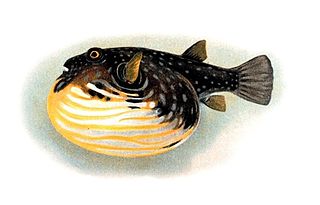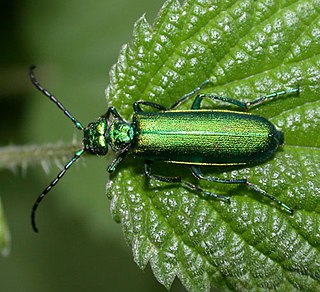 W
W- venomous animals can inject their toxins into their prey or victim, whilst poisonous animals can only infect their victims when contact is made between the pair.
 W
WBlister beetles are beetles of the family Meloidae, so called for their defensive secretion of a blistering agent, cantharidin. About 7,500 species are known worldwide. Many are conspicuous and some are aposematically colored, announcing their toxicity to would-be predators.
 W
WDiamphidia or Bushman arrow-poison beetle, is an African genus of leaf beetle. Diamphidia in the Chrysomelidae family, the same family as the Colorado potato beetle.
 W
WDiamphidia nigroornata or Bushman arrow-poison beetle, is an African leaf beetle species in the genus Diamphidia.
 W
WPoisonous fish are fish that are poisonous to eat. They contain toxins which are not destroyed by the digestive systems of animals that eat the fish. Venomous fish also contain toxins, but do not necessarily cause poisoning if they are eaten, since the digestive system often destroys their venom.
 W
WLeptinotarsa is a genus of leaf beetles.
 W
WThe monarch butterfly or simply monarch is a milkweed butterfly in the family Nymphalidae. Other common names, depending on region, include milkweed, common tiger, wanderer, and black veined brown. It may be the most familiar North American butterfly, and is considered an iconic pollinator species. Its wings feature an easily recognizable black, orange, and white pattern, with a wingspan of 8.9–10.2 cm (3 1⁄2–4 in) A Müllerian mimic, the viceroy butterfly, is similar in color and pattern, but is markedly smaller and has an extra black stripe across each hindwing.
 W
WPoisonous amphibians are amphibians that produce toxins to defend themselves from predators.
 W
WThe Spanish fly is an emerald-green beetle in the blister beetle family (Meloidae). It and other such species were used in preparations offered by traditional apothecaries, often referred to as Cantharides or Spanish fly. The insect is the source of the terpenoid cantharidin, a toxic blistering agent once used as an aphrodisiac.
 W
WToxic birds are birds that use toxins to defend themselves from predators. No species of bird is known to actively inject or even produce venom, but some birds are known to be poisonous to touch or eat. These birds usually sequester poisons from animals and plants that they feed on, commonly from poisonous insects.